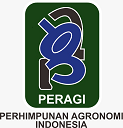Export Performance of Indonesian Processed Tuna Commodities in the Japanese Market
Abstract
Tuna commodity is globally competitive, but its performance is still below its competitor country, namely Thailand and is starting to compete with other countries, namely the Philippines, Vietnam and China. This study aims to evaluate the competitiveness performance and analyze the demand for processed tuna commodities in the Japanese market. Export competitiveness analysis is processed using the Revealed Comparative Advantage (RCA) index and the Revealed Competitiveness Advantage (RC) index. The level of competition and export demand will be analyzed using the Almost Ideal Demand System (AIDS) model. The results showed that the export performance of Indonesian processed tuna commodities was comparatively and competitively competitive in the Japanese market. The demand for Indonesian processed tuna commodities in the Japanese market has fulfilled the demand theory. Indonesian processed tuna is a normal item for Japanese consumers. For Indonesia, processed tuna from competitor countries Thailand, the Philippines, Vietnam, and China are substitute goods. Thus, an increase in prices in these four countries will increase Indonesia's share.
Keywords
Full Text:
PDFReferences
Alston J.C., Carter R., Green, Pick D. (1990). Whither armington trade models. American Journal Agrricultural Economics, 72(2), 455-467. Retrieved from https://www.jstor.org/.
Apridar. (2014). The competitiveness of Indonesian tuna export facing the ASEAN economic community. Aceh International Journal of Social Science, 3(1), 1-13. DOI: 10.12345/aijss.3.1.8663.
Dinas Komunikasi dan Informasi Jawa Timur. 2017. Adaptasi Kebijakan Perikanan Berkelanjutan, Penyebab Turunnya Produksi Tuna. https://kominfo.jatimprov.go.id /read/umum/adaptasi-kebijakan-perikanan-berkelanjutan -penyebab-turunnya-produksi-tuna-. [21 Februari 2017].
Food and Agriculture Organization of The United Nations. 2022. FAO Fisheries and Aquaqulture: Global Production. https://www.fao.org/fishery/en/fishstat. [10 Juli 2022].
Hamilton A, Lewis A, McCoy MA, Havice E. 2011. Market and industry dynamics in the global supply chain. North Carolina: The Pacific Island Forum Agency.
Hsu C. F., Chen Y. J., Kuo I. (2023). Modeling import demand for fishery products in Japan: a dynamic AIDS approach. Marine Resource Economics, 38(2), 135-151. https://doi.org/10.1086/723729.
Jambor A, Babu S. 2016. Competitiveness of Global Agriculture. Switzerland: Springer International Publishing.
Kementerian Perdagangan Republik Indonesia. 2021a. FTA 2021: Indonesia – Japan Economic Partnership Agreement (IJEPA). Jakarta: Direktorat Perundingan Bilateral Kementerian Perdagangan.
Kementerian Perdagangan Republik Indonesia. 2021b. Laporan Analisis Intelijen Bisnis: Tuna Kaleng HS 160414. Jakarta: Kementerian Perdagangan Republik Indonesia.
Kementerian Kelautan dan Perikanan. 2023. Statistik KKP: Kelautan dan Perikanan dalam Angka Tahun 2023. Jakarta: Kementerian Kelautan dan Perikanan.
Lipsey RG, Courant PN, Purvis D, Steiner PO. 1995. Ekonomi Mikro. Jakarta: Binarupa Aksara.
Trade Map. 2023. Extract Data [Internet]. https://www.trademap.org/. [10 Agustus 2023].
United Nations Comtrade Database. 2022. Extract Data [Internet]. https://comtrade.un.org/data/. [14 Juni 2022].
Yang S. R., Koo W. W. 1994. Japanese meat import demand estimation with the source differentiated AIDS model. Journal of Agricultural and Resources Economics, 19(2), 396-408. https://www.jstor.org/stable/40986854.
Refbacks
- There are currently no refbacks.


























